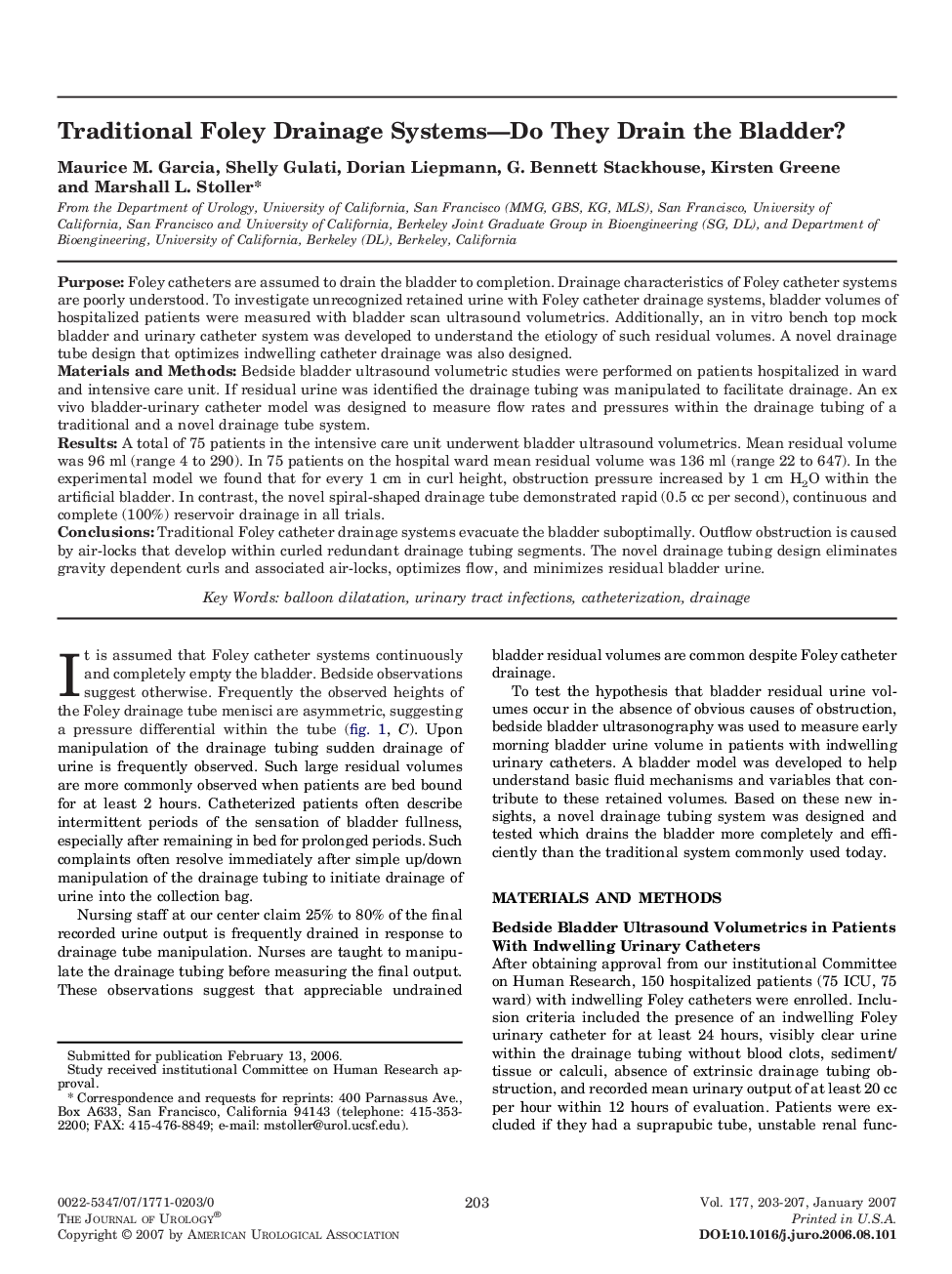| Article ID | Journal | Published Year | Pages | File Type |
|---|---|---|---|---|
| 3879667 | The Journal of Urology | 2007 | 5 Pages |
PurposeFoley catheters are assumed to drain the bladder to completion. Drainage characteristics of Foley catheter systems are poorly understood. To investigate unrecognized retained urine with Foley catheter drainage systems, bladder volumes of hospitalized patients were measured with bladder scan ultrasound volumetrics. Additionally, an in vitro bench top mock bladder and urinary catheter system was developed to understand the etiology of such residual volumes. A novel drainage tube design that optimizes indwelling catheter drainage was also designed.Materials and MethodsBedside bladder ultrasound volumetric studies were performed on patients hospitalized in ward and intensive care unit. If residual urine was identified the drainage tubing was manipulated to facilitate drainage. An ex vivo bladder-urinary catheter model was designed to measure flow rates and pressures within the drainage tubing of a traditional and a novel drainage tube system.ResultsA total of 75 patients in the intensive care unit underwent bladder ultrasound volumetrics. Mean residual volume was 96 ml (range 4 to 290). In 75 patients on the hospital ward mean residual volume was 136 ml (range 22 to 647). In the experimental model we found that for every 1 cm in curl height, obstruction pressure increased by 1 cm H2O within the artificial bladder. In contrast, the novel spiral-shaped drainage tube demonstrated rapid (0.5 cc per second), continuous and complete (100%) reservoir drainage in all trials.ConclusionsTraditional Foley catheter drainage systems evacuate the bladder suboptimally. Outflow obstruction is caused by air-locks that develop within curled redundant drainage tubing segments. The novel drainage tubing design eliminates gravity dependent curls and associated air-locks, optimizes flow, and minimizes residual bladder urine.
